The Ultimate Guide to Lisbon: A Capital of Warm Welcomes

LOOKING FOR THE ULTIMATE LISBON TRAVEL GUIDE?
With its historical architecture, exceptional cuisine, gorgeous views, and friendly hospitality, it’s no wonder that Lisbon is one of the top vacation spots in Europe. When planning your Lisbon itinerary, you want to make sure you include some of the best restaurants, sites, and things to do. Behold my ultimate travel guide to Lisbon Portugal.
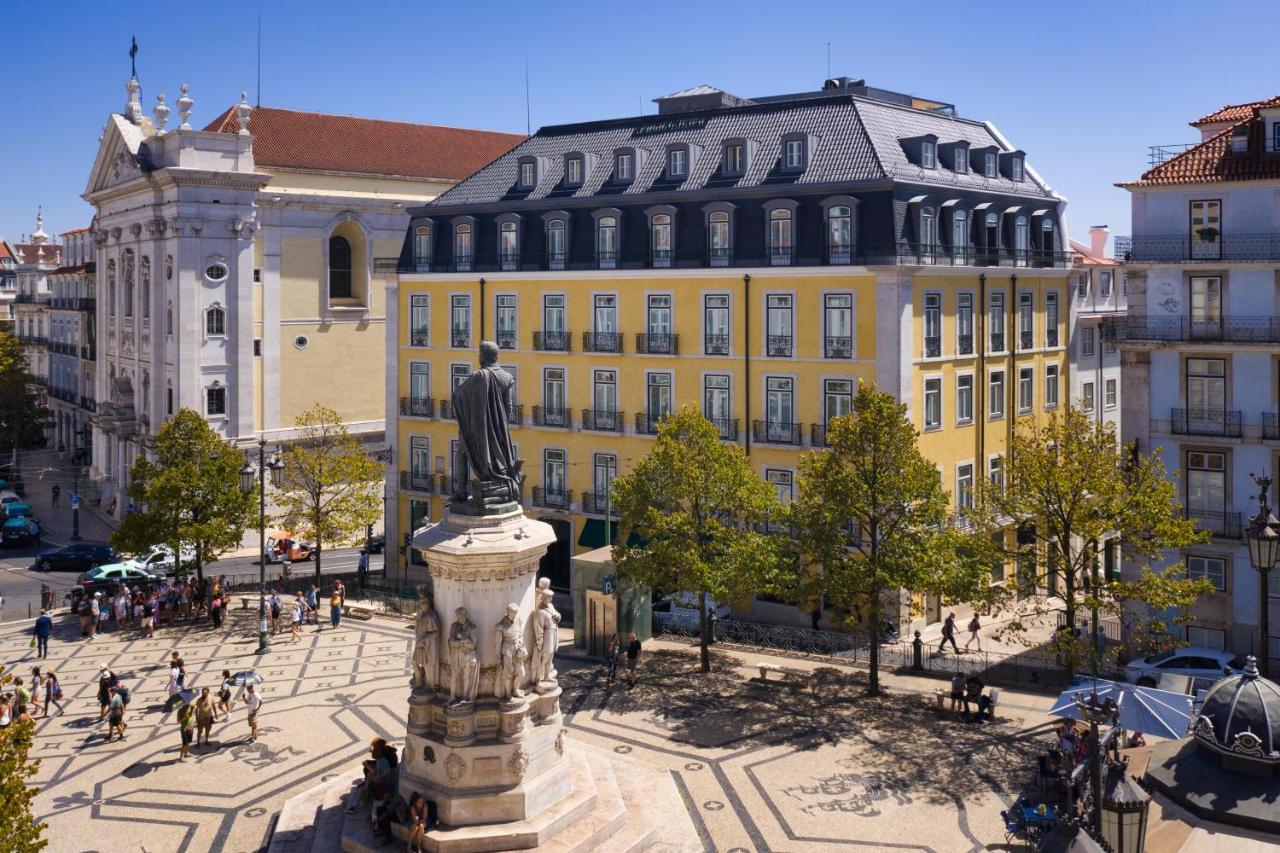
Don’t want to explore Lisbon by yourself? Take a private or group tour of this beautiful city.
We recommend this 5⭐️ Half Day Sightseeing Tour on a Private Electric Tuk Tuk or this budget-friendly Lisbon: History, Stories and Lifestyle Walking Tour.
First things first, my best piece of advice before coming to the sunny capital of Portugal: wear, take, buy, but whatever you do, you MUST have non-slip shoes. This is almost as vital as bringing underwear. Also, bring your appetite for the freshest seafood of your life.
Ready for the ultimate guide on what to do in Lisbon, chock full of travel tips like a guide to Lisbon neighborhoods and info about where to stay in Lisbon? Let’s dive in.
First things first, a little historical background knowledge is in order:
- Lisbon is older than Rome and was founded by the Phoenicians in 1200 BC. The city is known to have seven hills, but this was just to copy Rome. There are, in fact, nine hills.
- Lisbon locals are known as ‘Lisboetas’ and Alfacinhas.’ Not so interesting, but just a cute fact.
- One of the world’s most deadly earthquakes occurred on 1st of November, 1755. Unfortunately, because of this, there were fires and, consequently, a tsunami. Some of the city recovered, and some of it did not.
- From 1932-1974, Portugal was overrun by a dictator, António de Oliveira Salazar. Times were really hard for most big businesses, and people had a ‘secret language’ where they’d speak in code when in public. The dictatorship ended on the 25th of April, 1974, known as the ‘Carnation Revolution’, and each year there is a parade in remembrance.
- The Vasco da Gama bridge is the longest bridge in Europe and has striking views of the city.
- Lisbon boasts two UNESCO World Heritage sites— Mosteiro dos Jerónimos, a maritime-inspired Gothic monastery, and Torre de Belém, a 16th-century landmark tower on the Tagus River.
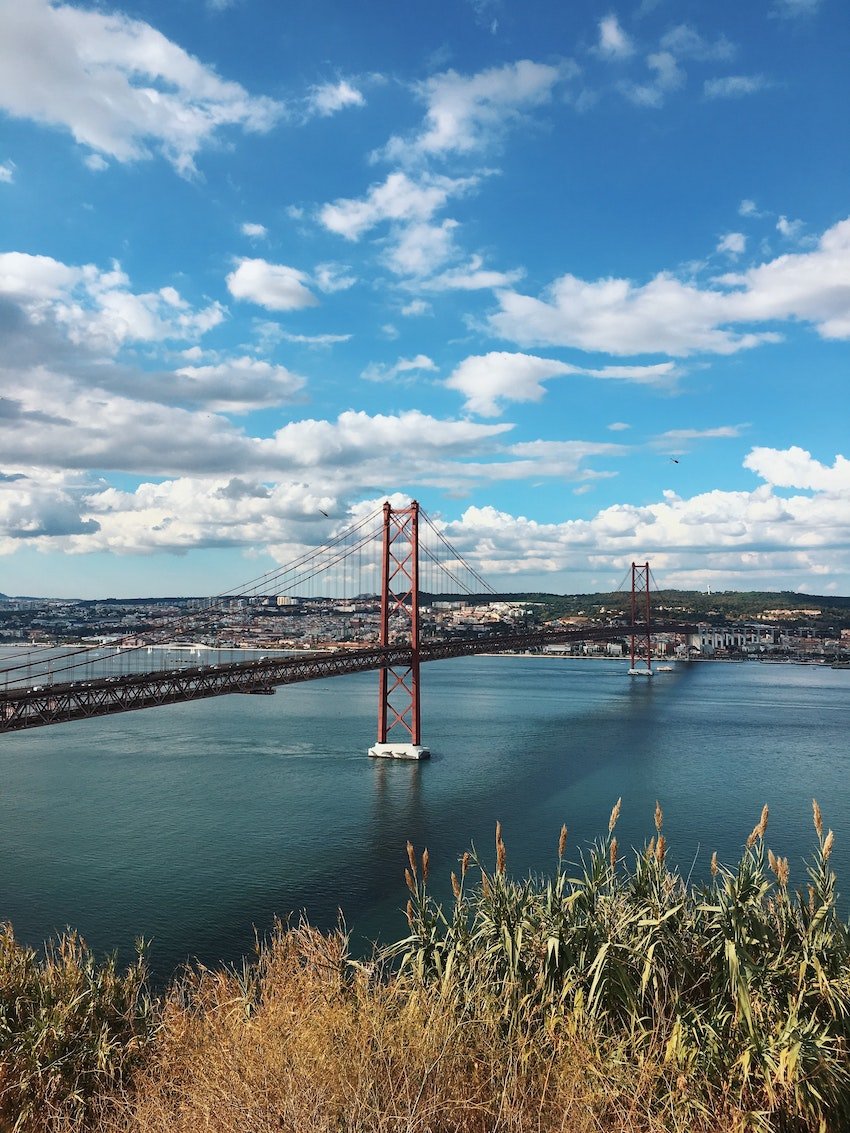
Guide to Lisbon
Where is Lisbon?
So where is Lisbon Portugal located? If you’re planning a trip and traveling Lisbon-bound, it’s good to know a bit about its geography. Nestled in the western part of Portugal, this dazzling capital sits right by the edge of Europe, overlooking the expansive Atlantic.
And guess what? It’s not just the ocean that gives Lisbon its iconic views. And as you can see from the Lisbon map, the Tagus River snakes its way through the city, providing some seriously picturesque scenes. FYI, I highly recommend booking a Lisbon boat trip.
Plus, its prime positioning makes it perfect for travelers itching to explore more: with enchanting day trips like Sintra just a stone’s throw away and transport connections for anyone that wants to head North to Porto or South on the Algarve to Lisbon train.
🤔 Still a little bit on the fence on whether you should visit Lisbon Portugal? Read ► Why Visit Portugal Lisbon? 7 Reasons To Visit The Portuguese Capital
Guide to Lisbon
Best time to Visit Lisbon
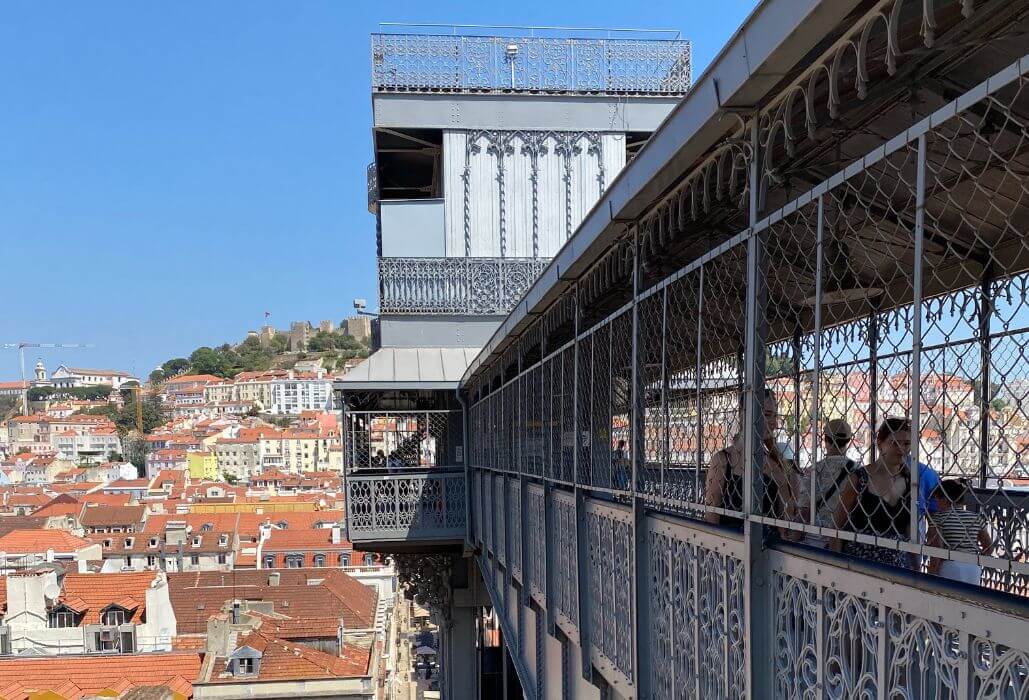
May – June; September – October; Christmas (obviously, you can visit during other seasons)
February could also be an option if you’re keen on Carnaval festivities, but the BEST month is June (13 June specifically) because of Santos Populares, which is when the whole country celebrates the saint from their town by decorating the streets with banners and eating the most delicious grilled sardines and drinking ginjinha. It’s basically a month-long Festa but can be more subtle, depending on the area.
🍒 Ginjinha: Also known as ginja, is a sweet liqueur made from Morello (sour) cherries soaked in a distilled spirit called aguardiente. The mixture is flavored with sugar and spices like cinnamon. It is deceptively sweet, small, and packs a punch.
Guide to Lisbon
What to Wear
A travel guide to Lisbon isn’t complete without a guide on what to pack. Did you remember your non-slip shoes? Well, that’s a must, other than that, what you pack really depends on when you will be visiting Lisbon. Here is our travel guide to what to pack for your Lisbon trip:
Spring // Fall
The weather in Lisbon is never too cold, and it starts getting warm around April. In fact, you’ll probably see people already swimming in the ocean as early as March.
Temperatures are warm Apr-Sep, the peak travel time. The warmest (without being too hot) times to travel to Lisbon Portugal are between May-June and Sept-Oct. The weather isn’t too hot and not too cold; it’s just about right. Fun fact, Portugal is one of the best European countries to visit in the fall. So what should you pack?
summer
The months of Jul–Aug are hot, sunny, and dry. So make sure that you pack:
winter
The weather gets much colder from November until March. If you do plan on heading to the city of Lisbon during this period of time, you should pack the following:
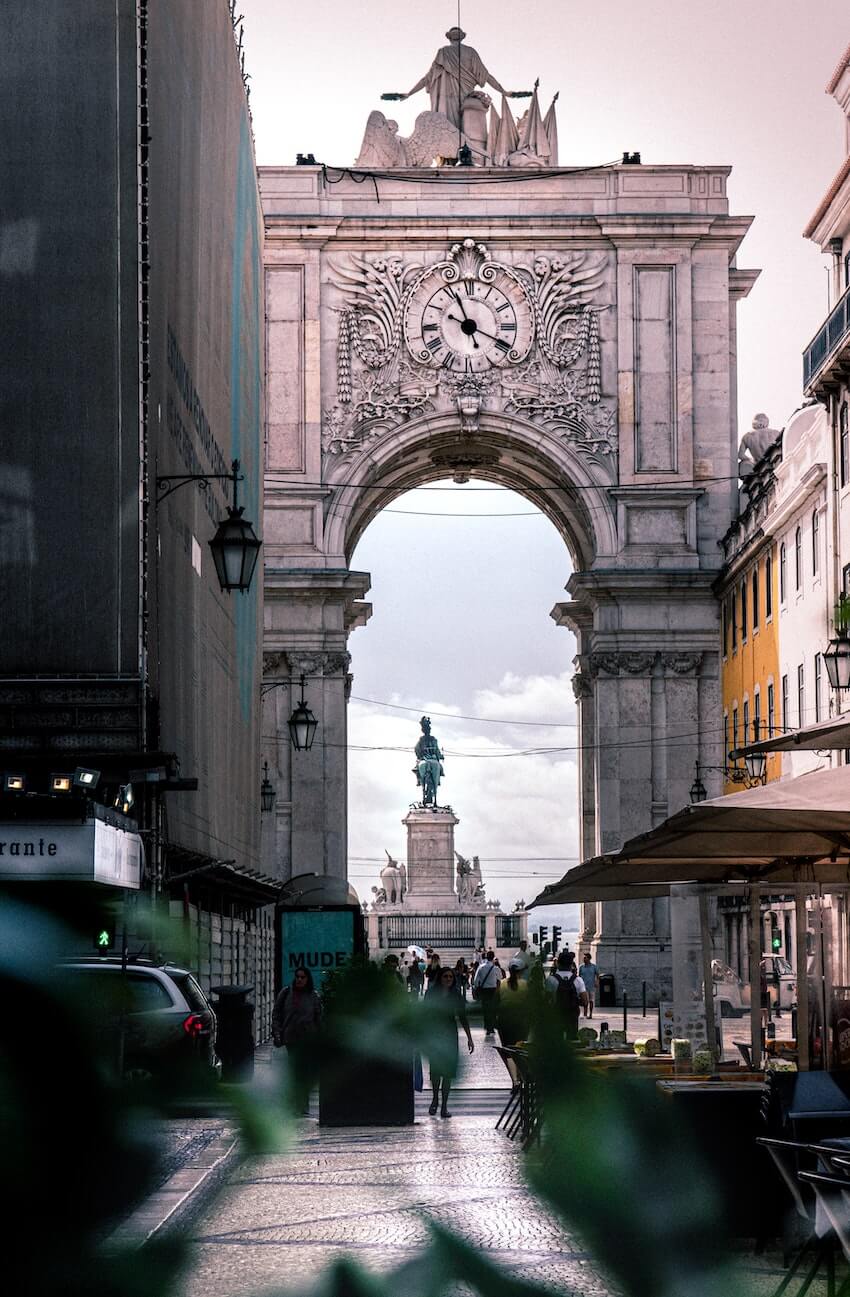
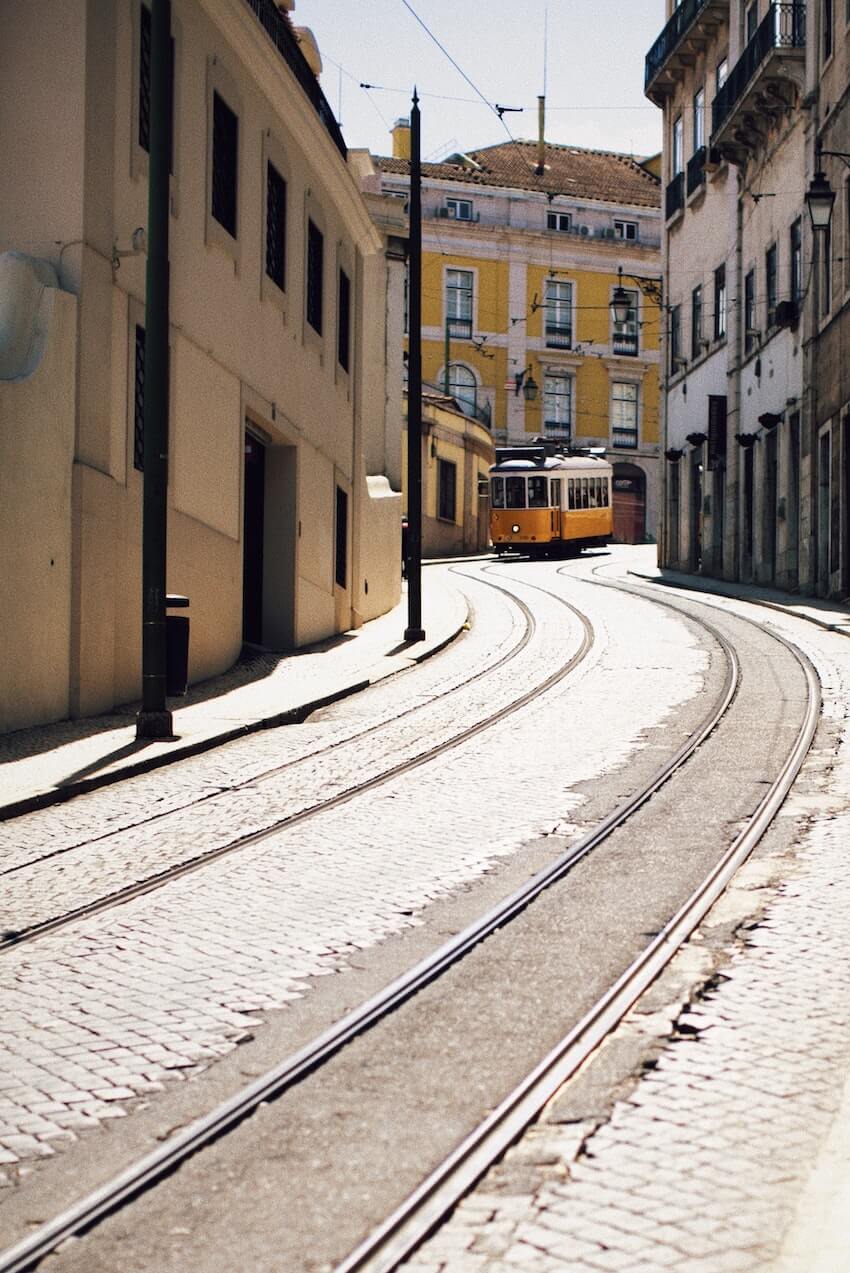
Guide to Lisbon
Public Transportation
Public transport in Lisbon is not the absolute best in all of Europe, but better than others. You should have no problem navigating the metro and buses. Plus, the airport is super central. Uber works really well here and is super cheap.
You have probably heard about the famous 28 Tram Lisbon. If you’re on a budget, then try to catch it at the end of the line: Campo de Ourique (Prazeres) instead of at Martim Moniz.
🎫 If you are in Lisbon, consider getting a 24, 48, or 72-hour Lisbon Pass. With this pass, you can enjoy unlimited travel on city transport and free admission to 39 museums, historic buildings, and more. Or you can opt for a Hop-on-Hop Off bus and tram tour with a river cruise.
OTHER LISBON PORTUGAL TRAVEL TIPS: If you want to schedule a walking tour in Lisbon or a tours by locals Lisbon experience, there are a number of great options in the city, like this Lisbon: Food and Wine Walking Tour, Lisbon Tram No. 28 Ride & Walking Tour, or this Lisbon: Full-Day City Private Tour.
If you want a go on a day trip to Sintra, there are a number of great tour options available, including a private tour guide Lisbon. There are plenty of tours in Lisbon, so you’ll be able to book the perfect one for you and your needs.
Guide to Lisbon
Language
If you didn’t already know, the official language of Portugal is Portuguese. Do you know how to say Lisbon Portuguese? It’s Lisboa. Here are some more words and phrases that can come in handy during your trip to Portugal:
- Hello (Olá) similar pronunciation in Spanish but a bit more nasally
- Please (por favor)
- Thank you (Obrigado, if you identify as a man & Obrigada, if you identify as a woman)
- Goodbye (Tchau, pronounced like “ciao” if you’re speaking informally & ”Adeus”, if it’s to someone formally, ‘ah dey oush’)
- Quanto custa? (how much does that cost?)
- Você fala inglês? (do you speak English? formally)
So, would you say that Portuguese people mostly speak English and you can get around in the city even if you don’t know a lick of Portuguese? Definitely. Lisbonne Portugal is a touristic city, which means that the majority of people that you will meet while wandering through the cobblestone streets will be able to talk to you in English.
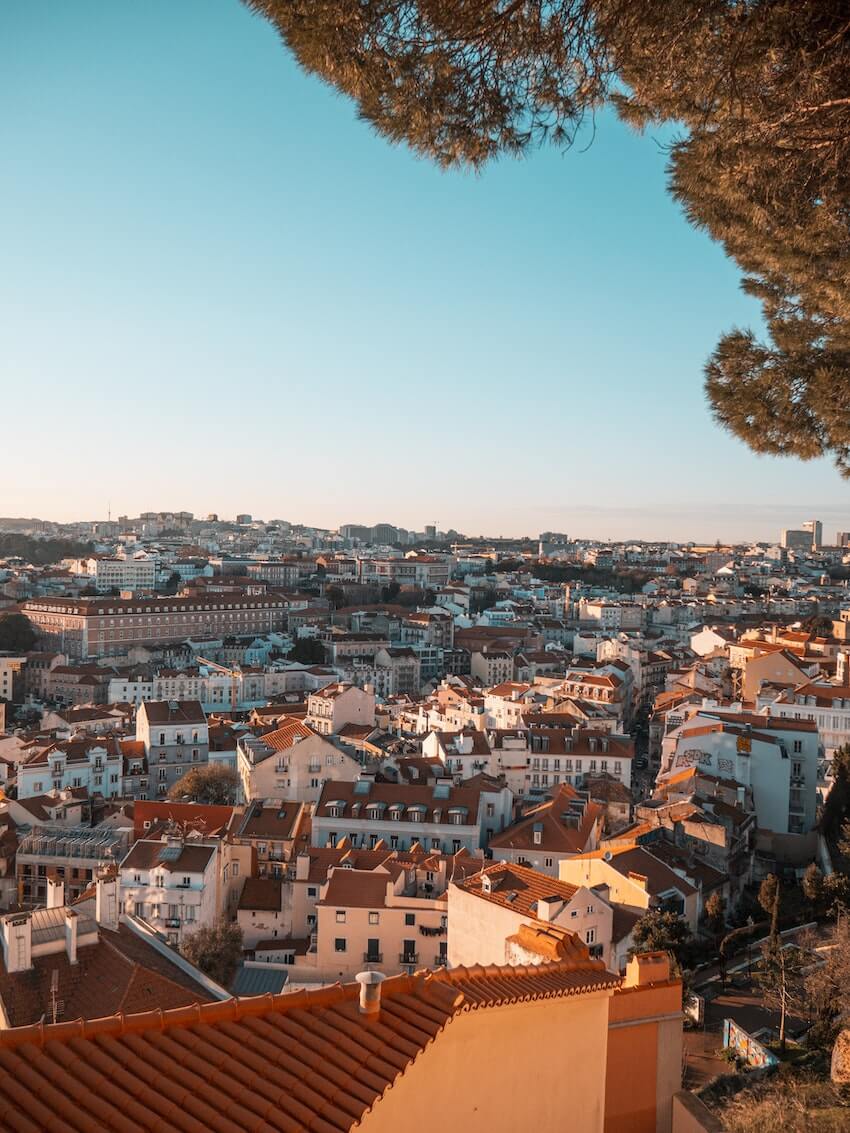
Guide to Lisbon
Lisbon Neighbourhoods Guide
There are several different areas of Lisbon you could stay in. There are 24 officially delineated Lisbon areas and many more designated by the Lisbon inhabitants.
Picking the right neighborhood can make all the difference. If you’re on the hunt for trendy spots and stylish hangouts, Príncipe Real is your best bet. For those coming with family, Belém offers a mix of history and spacious parks, making it ideal for both kids and adults.
Dive deep into Lisbon’s essence with a leisurely walk through the charming lanes of Alfama. If it’s your first time in the city, Baixa-Chiado offers a blend of Lisbon’s classic and contemporary sides, placing you right at the city’s core.
For the night owls, Bairro Alto ofers an energetic nightlife scene and in contrast, Campo de Ourique feels like a cozy, little town tucked inside the city. And for travelers who like being at the heart of action, Avenidas Novas is strategically positioned (in central Lisbon), giving you easy access to almost everything Lisbon has to offer.
Guide to Lisbon
Where to Stay in Lisbon
📍 Some of the best areas to stay in are: Alfama/Graca, Rossio, Avenida, São Bento, Principe Real, and Santos. Here is a list of my favourite hotels in Lisbon:
- The Vintage Lisbon (📍Rato) | A 5* boutique hotel where one-off art & design can be found in every corner.
- The Independente (📍Bairro Alto) | A stunning, opulent building originally built as an ambassador’s residence
- The Postcard Lisbon (📍Rato) | Understated B&B in a historic house
- Torel Palace Lisbon (📍Alfama) | Set on a hillside in downtown Lisbon, this upscale hotel occupies 2 Pombaline-style buildings
- Casa dell’Arte Club House (📍Alfama) | An upscale guesthouse in an elegant 19th-century building with a colorful, tiled facade.
- Casa Balthazar (📍Baixa) | Quaint adults-only B&B with modern artwork and a gorgeous view over Lisbon
🏨 Looking for some more options? Read our article: The 23 Best Boutique Hotels In Lisbon.
Guide to Lisbon
Food & Drinks
From savory seafood dishes and iconic pastries like pastéis de nata to the warming sip of ginjinha and vibrant local wines, Lisbon has several restaurants, brewpubs, and pastry shops ready to treat your taste buds. Let’s explore some of the best:
Best Restaurants in Lisbon
breakfast (pequeno almoço) – typically, Portuguese eat a light breakfast consisting of a croissant/small pastry, an espresso, and an orange juice, but here are some other options for breakfast or brunch:
- Java (Praca Dom Luis I 30, go through the elevator) → best rooftop view of the city
- Curva (Rua Damasceno Monteiro 108D) → art mixed with food
- Manifest.Lisbon (Rua da Sociedade Farmaceutica 31)
- Tease (found all throughout the city)
- COMOBA → great vegan options
- Café Janis → all-day café
- Fauna & Flora (there are two)
- Hello Kristof / The Mill → specialty coffee, brunch, pastries & magazine store.
- Dear Breakfast (two locations) → All-day brunch
- Amelia (Rua Ferreira Borges 101) → delicious pancakes
- Zenith (Rua do Telhal) → brunch and cocktails
- Clube Caffeine → mostly just coffee and also has some nice cocktails)
// Hipster guide to Lisbon option: if the weather is nice, would be to have a stroll in LX Factory on a Sunday afternoon and have lunch there.
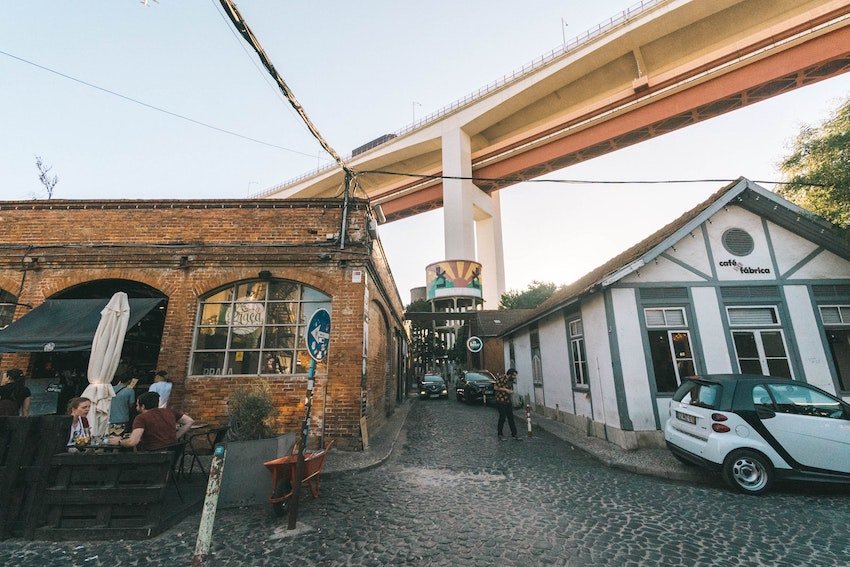
lunch (almoço) + dinner (jantar) — typically, Portuguese eat lunch around 13.00-14 and dinner at 20h/21h, but obviously, you can eat whenever you’d like. Try to eat bacalhau (codfish) because it’s famous around the country! Polvo (octopus) is also fresh everywhere.
- Ramiro → famous place and always has a line outside, so during lunch, it’s usually better, but it’s the best seafood you’ll have in your life
- O Velho Eurico → traditional Portuguese cuisine
- Taberna do Calhau → traditional Portuguese cuisine with a modern twist
- Senhor Uva → only local products with a modern twist
- SEM Restaurant → restaurant & wine bar which cooks with regenerative food and without a bin
- Ultimo Porto → opens only for lunch and has wonderful seafood
- Raizes → traditional Portuguese cuisine with a modern twist
- Time Out Market → a largely closed space food court with a huge variety of different food options
- Casa do Alentejo → traditional Portuguese cuisine from the region of Alentejo
- O Tachadas → authentic, no-fuss Portuguese cuisine in Madragoa (do order the steak)
- Tasquinha Ilha do Madeira → typical food from Madeira, and you must get a poncha drink
- Taberna Portuguesa → traditional Portuguese cuisine from the region of Alentejo
- Cantinho d’Ourique → authentic, no fuss Portuguese cuisine in Campo de Ourique
- Lisboa Tu & Eu → cute lunch spot with small plates
- Taberna Sal Grosso → a modern take on Portuguese dishes
- Adega do Kais → expensive, but you basically eat inside of an obnoxious castle but seriously incredible food
- Sala de Corte → If you’re wanting to have a high dining experience because the chef is famous and has many restaurants in Lisbon
- The Food Temple or O Gambuzino → both restaurants are vegan-friendly
// If you have time to kill one afternoon or for sunset, we highly suggest hopping on the ferry from Cais do Sodré Fluvial Terminal to Cacilhas and then walking to the restaurant Ponto Final in Almada to eat! You should definitely make a reservation as tables fill up quick!

If Portuguese cuisine isn’t your groove, here’s a list of the best international restaurants:
- Mezze → middle eastern tapas style restaurant run by Syrian refugees
- Tantura → middle eastern restaurant
- Aura Dim Sum Lab → handmade dim sum
- Farès → Lebanese food
- El Taco Chingon → Mexican food
- Las Gringas → Mexican food (takeaway and delivery only)
- Retrogusto84 → best pizzeria in Lisbon
- Boa-Bao → Chinese/Thai fusion and is very aesthetically pleasing inside
- “Illegal” Chinese Clandestine → these are located around the area of Martim Moniz. Rua Guia 9, go to the second floor. Oriental Dongfong Dumpling is also tasty
- A Cevicheria → (famous spot so I would try to go early if you can)
- Paco Bigotes → best tacos along the river Tejo
dessert (sobremesa) —we have a rather large sweet tooth, but honestly, Portuguese sweets don’t excite us so much because typically they’re a bit too dry or too sweet, but they can do a wonderful chocolate mousse. I would suggest gelato if the weather is nice, either from Nannarella or Gelato Davvero (Italian-owned.)
It would be breaking the law, practically, if this article didn’t mention the staple of Portuguese sweets: the pastel de nata.
Only three people on earth know the secret recipe of the original pastéis from Belém, which are obviously the tastiest ones (no further comments) so make sure to visit the shop while in Lisbon.
Other incredible pastelarias include:
- Manteigaria
- Aloma
- Pastelaria Cristal
- Pastelaria Santo António

BrewPubs for Beer (Cerveja)
There are two main beers in Portugal called Super Bock and Sagres, which you can find everywhere, but if you’re keen on trying some breweries:
wine Bars (vinho)
Wine in Portugal is absolutely phenomenal and SO CHEAP here! Opt for red wine from Alentejo, Douro, or the region Dão. White wine is good from Setúbal, Alentejo or Monção e Melgaço. Moscatel from Setúbal is delicious but is a bit sweeter.
Vinho Verde (green wine, but not really green) is from its own region in the north and is best during the summer because there is little carbonation and less alcohol content. Vinho do Porto is typically drunk after a meal and is a must-try while in Portugal.
- BlackSheep → Portuguese wine bar run by Americans actually and is super cozy
- Tati → also a tapas place and is AMAZING
- Senhor Manuel → just recently opened. The owners also own Senhor Uva.
- Bythewine → an excellent choice for drinking wine by the producer Jose Maria da Fonseca, from Setúbal
- Jobim → our go-to wine bar owned by Brazilians with some tapas and fun vibes
- The Wine Cellar
Here are some places where to purchase wine: BlackSheep, Terra Wine Shop, Ladidadi Wines, and Garrafeira Estado D’Alma
Bars & Cocktails
- Café Janis → happy hour literally from 19-20h on Fridays. I come here quite frequently so you might find me here on a Friday, aha
- Onda Cocktail Room
- Java → beautiful rooftop bar
- Lumi Rooftop
- Tasca do Chico → go at 9 pm for Fado music or go earlier to eat and stay
- Tasca Mastai → the only place I go in Lisbon for an Aperol Spritz if you’re feeling Italian
- Casa Independente → probably my favorite place for drinks in Lisbon, but also for the dancing on the weekends
- Foxtrot
- Park Bar → rooftop
- Topo Martim Moniz → rooftop
- Rio Maravilha → rooftop
- Zazah Good View → rooftop
- Madame Petisca → rooftop
- Ferroviário → rooftop
- No13 Lisboa
- Café de Garagem → roof and inside seating
- anywhere in Bairro Alto~
- any kiosk around Lisbon!
Clubs
- Incognito
- Plateau (80s jams)
- Lux CLUB (great for dancing! Arrive around 2 AM)
For some great clubs and bars, make sure to head on over to Pink street
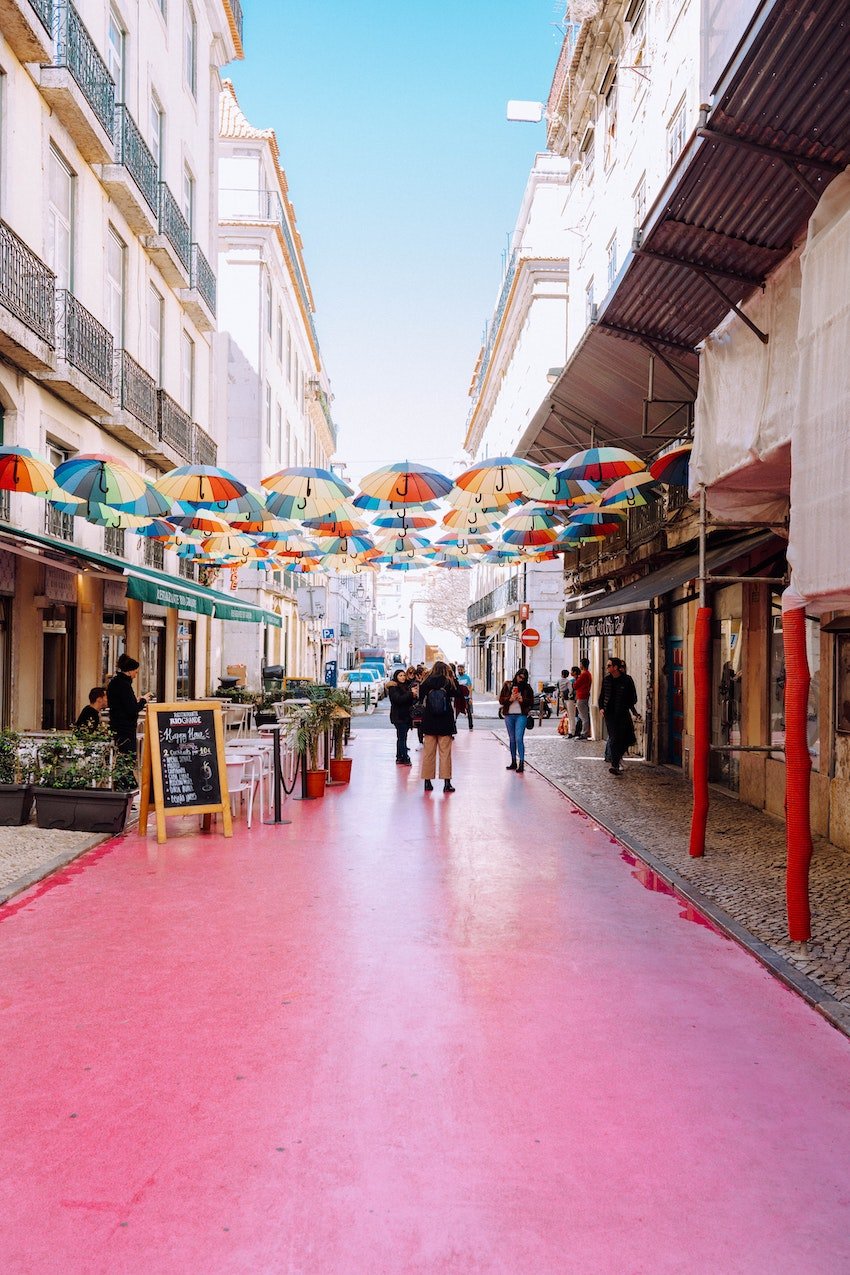
Guide to Lisbon
Things to See
Planning a Lisbon visit? Once you’ve finished eating and drinking, take a walk and see some of these amazing sights in and around Lisbon, Portugal. Here are some attractions of Lisbon for the perfect visit in Lisbon:
- Comércio Square
- Alfama district ➡ head to a Fado show.
- A Visit to Belem ➡ Some Belem Lisbon highlights include the iconic Belem Tower, Jerónimos Monastery, Monument to the Discoveries, and the famous Pastéis de Belém bakery.
- Museu Nacional do Azulejo
- National Pantheon
- Palácio dos Marqueses de Fronteira (a bit out of the city, but you could always take an Uber as it is stunning)
- Santa Justa lift
- São Jorge Castle
- Convento do Carmo
- Lx Factory
- Aqueduct Lisbon ➡
- Oceanário de Lisboa (Aquarium Lisbon) ➡ an aquarium in Lisbon
- National Museum of Contemporary Art ➡ MNAC is a must-see for those wanting to learn about and enjoy Portuguese romantic, naturalist, modern, and contemporary art.
Most weekends, there are little markets all over the city! Looking for a city guide to Lisbon’s off-the-beaten-path gems? Basically, a small guide to Lisbon? Check out our article about Lisbon’s 10 hidden gems.
best Spots For A Sunset
- Miradouro da Santa Catarina
- Miradouro de Santa Luzia… walk a little further for Portas do Sol
- Miradouro de São Pedro de Alcântara (newly reopened)
- Jardim do Torel (bit of a walk but nice views)
- Miradouro da Senhora do Monte (highest point in Lisboa and has best view of the city but also is quite a hike up)

Guide to Lisbon
Escaping the City
Our city guide to Lisbon wouldn’t be complete if we didn’t mention some weekend getaway destinations.
⭐️ Some of the best day trips from Lisbon include Sintra, Cascais, Azenhas do Mar, Obidos, Costa da Caparica, and Sesimbra. But that’s just the tip of the iceberg. If you want to learn more about what to do around Lisbon, you’ll love this article 👉 20 Best Day Trips From Lisbon.
If you are looking to escape the city for the day, then here are some day trips that you can go to:
Sintra
- Take the train to Sintra, take the bus to Pena Palace, or take an organized tour.
- Monserrate Palace is beautiful!
- Castle of the Moors
- Eat at Cafe Saudade
- Cabo da Roca (the most western point of Europe)
- Piriquita – famous pastry shop
For more information about a day trip to Sintra from Lisbon, make sure to read our article: A Sintra Day Trip: Your Complete Guide. If you are looking to do a day trip to Cascais from Lisbon, many of the Sintra tours from Lisbon offer a stop in Cascais.
Beaches
Along the Cascais line, the best beaches are São João and São Pedro do Estoril.
Along the Sintra line, the best is Praia do Guincho, Praia da Ursa, Praia da Adraga, and Praia das Maçãs. If you have time, check out Azhenhas do Mar.
If you have a car, drive across the April 25th bridge to Costa da Caparica or Fonte da Telha. However, the best beaches are in a national park called Arrabida: Ribeira do Cavalo and Praia de Galapinhos. These can also be done as a day trip from Lisbon.
⭐️ If you plan on taking a road trip to Porto, there are a number of beautiful stops along the way. Here are ten amazing places that you can visit if you are driving from Lisbon to Porto. Also, here are a couple of day trips you can take from Lisbon.
Guide to Lisbon: Frequently Asked Questions
How many days do I need in Lisbon?
Three days in Lisbon gives you a solid introduction to the city. In that time, you can hit up the major attractions and enjoy the local food.
If you want to explore outside the city, like the fairytale town of Sintra or the beach areas of Cascais, add a few more days.
And if you’re thinking about visiting Porto or the Algarve, you might want to extend your stay. The Algarve is known for its picturesque coastline, which stretches approximately 200 kilometers (about 125 miles). So you’ll need at least 3-4 days to explore.
Are 3 days in Lisbon too long?
Not at all. With its rich history, beautiful architecture, and vibrant neighborhoods, there’s plenty to do in Lisbon. Three days will allow you to explore without feeling rushed, and you’ll still have some downtime to just relax and soak in the atmosphere.
Is Lisbon friendly to American tourists?
Absolutely. Lisbon is a popular destination for many, including Americans. The locals are known for their friendliness and hospitality. So, expect a warm welcome.
Do they speak English in Lisbon?
YES — especially in the main tourist areas of Lisbon, Porto, and the Algarve. Many of the restaurants, shops, and attractions will have English-speaking staff. But, as you venture into less touristy areas, it might be less common, so knowing a few basic Portuguese phrases could be helpful.
What is better Porto or Lisbon?
It’s hard to choose! Lisbon is the bustling capital, renowned for its historic districts, tram rides, and ocean views. Porto, on the other hand, offers a unique blend of riverfront vistas, iconic blue-tiled buildings, and of course, the world-famous port wine. Both cities have a distinct charm, and your preference might depend on your interests.
Is Lisbon a walkable city?
YES — walking is one of the best ways to explore Lisbon. But a heads up: the city is known for its seven hills, meaning there will be some uphill and downhill walking. Good, comfortable shoes are a must.
If you don’t want to walk around Lisbon Europe by yourself, there are plenty of walking tours that you can go on, including the Free Walking Tour Lisbon. For a list of the best walking tours Lisbon Portugal has to offer ► 12 Best Lisbon Walking Tours: From Cobblestones To Castles.
What is the best time to visit Lisbon?
The months of May, June, September, and October, also known as the shoulder seasons are usually the best times. The weather is mild, not too hot or cold, and you avoid the summer tourist rush, which means fewer crowds at popular spots.
Is Lisbon cheap or expensive?
Relative to some other European cities, Lisbon can be more budget-friendly. Dining and accommodations often come at a better price. However, how much you spend also depends on your plans and choices. Planning and budgeting ahead can help you get the most out of your trip.
How Do Your Pronounce Lisbon?
Lisbon is pronounced as “lihz-buhn” in English. However, in Portuguese, it’s “Lisboa” and pronounced approximately like “leesh-BOH-uh”. If you’re traveling to Portugal, you’ll likely hear the Portuguese version more often.
In some languages, the name for Lisbon does sound more like “Lissabon.” For instance:
- In German: Lissabon
- In Dutch: Lissabon
- In Swedish: Lissabon
In these languages, the pronunciation would be closer to “LISS-ah-bon” or “LISS-uh-bon.”
So while “Lissabon” is not the English pronunciation, it is correct in other languages. If you heard “Lissabon,” it could be from someone speaking one of these languages or a similar one.
Guide to Lisbon
More Lisbon Travel Guides & Articles
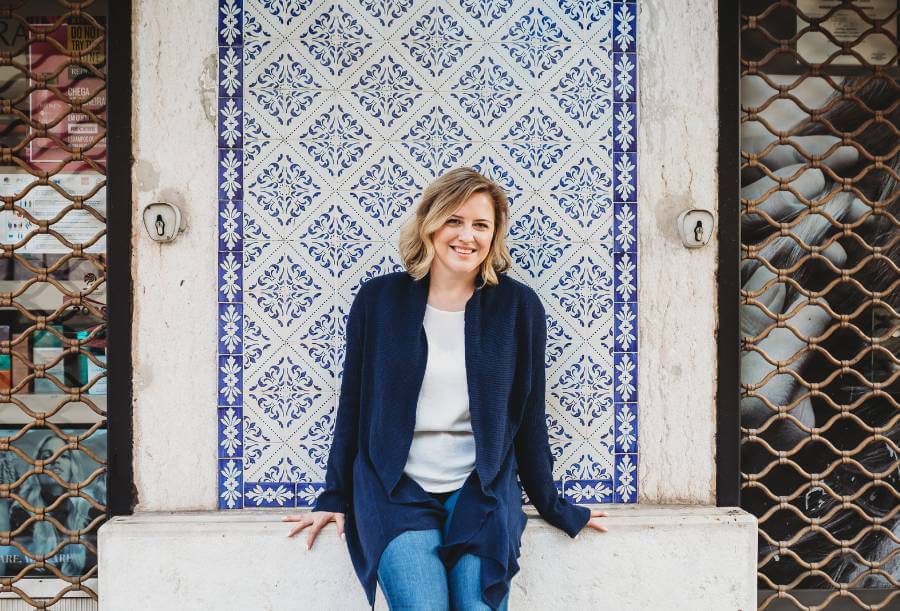
Hopefully, this ULTIMATE tourist guide to Lisbon gave you a good foundation to jump off. Remember that Portugal is not just Portugal Lisbon city and Porto, so make sure to go and explore a little bit.
If you’re looking for more info on traveling to Lisbon, Portugal, check out these additional Lisbon travel blogs, Lisbon guides, and related articles:
- 20 Best Day Trips From Lisbon: Incredible Places To Visit
- The 12 Best Walking Tours Lisbon Portugal
- 15 Best Boat Tours In Lisbon: An Unforgettable Guide to Lisbon
- 40 Best Sights In Lisbon: A Rough Guide to Lisbon
- Wine Tours In Lisbon: 12 Amazing Sip And Savor Experiences
- 15 Food Tours In Lisbon: A Guide To The Best Eats In The City
- Visiting Lisbon? The Best Area To Stay In Lisbon
- 15 Best Guide Lisbon Tours for the Ultimate Sightseeing Experience
- The Best Fado In Lisbon: 11 Fado Houses To Explore
- Looking for An Adventure? The Best Outdoor Activities in Lisbon (and around Lisbon)
// So, hopefully, this little city guide to Lisbon helps you on your way to exploring Lisboa! But don’t worry if you fall in love with the city (or the incredibly kind people) after the first day! And remember your non-slip shoes and travel insurance (just in case)
boa viagem!

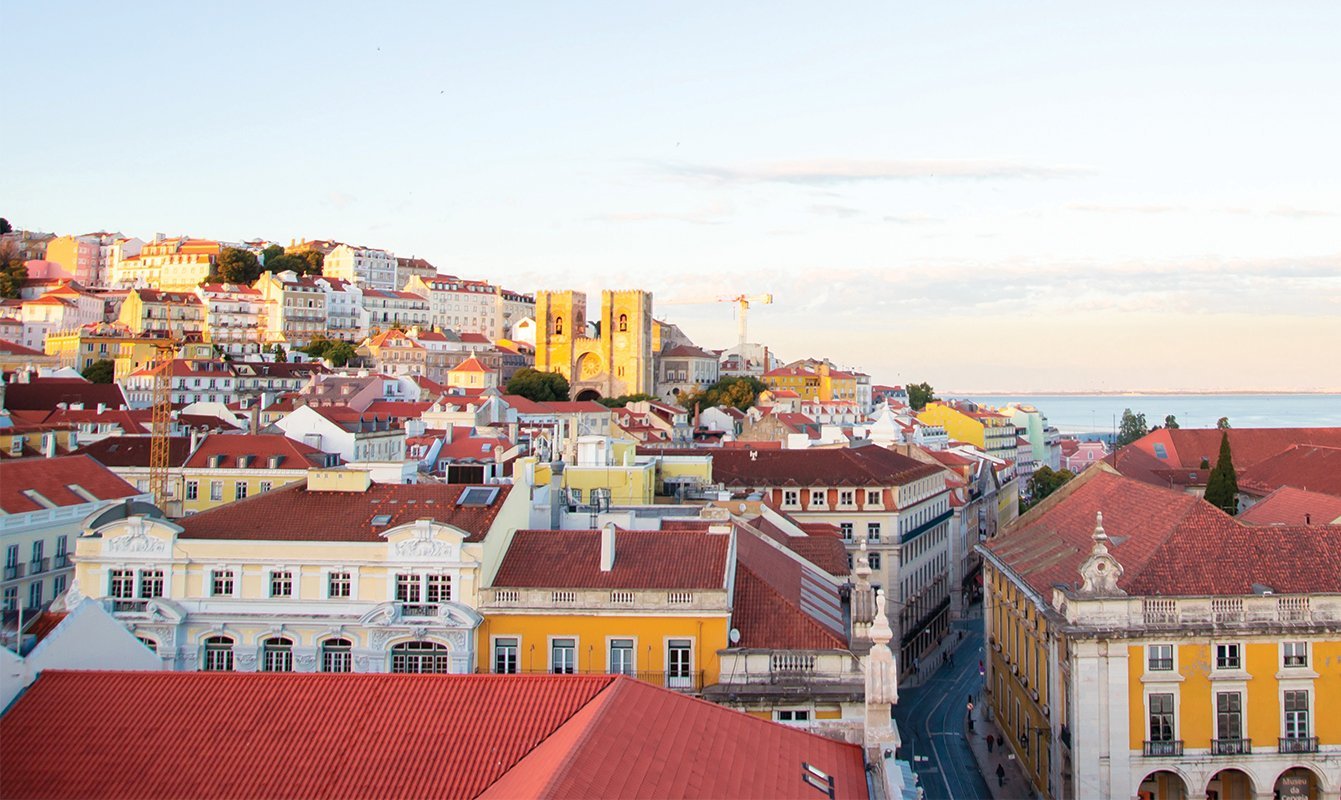
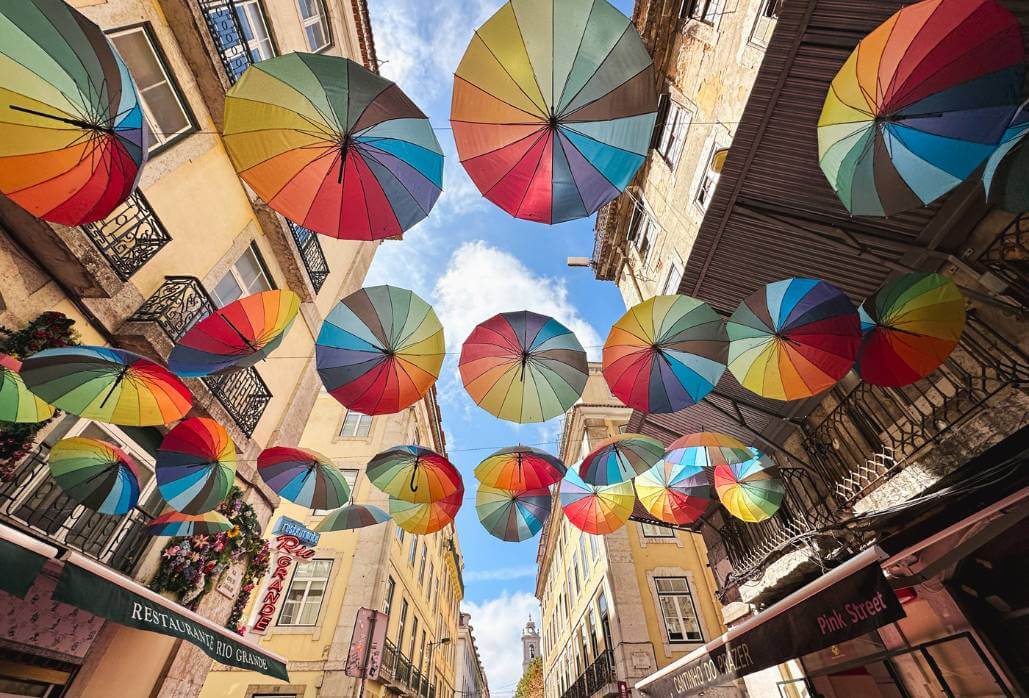
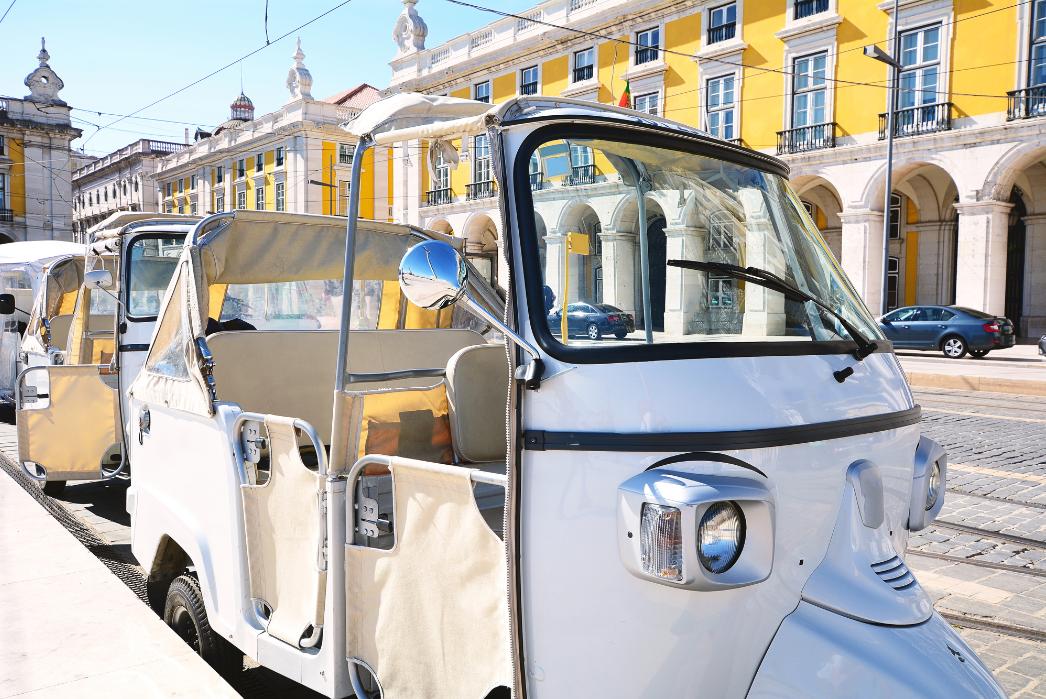
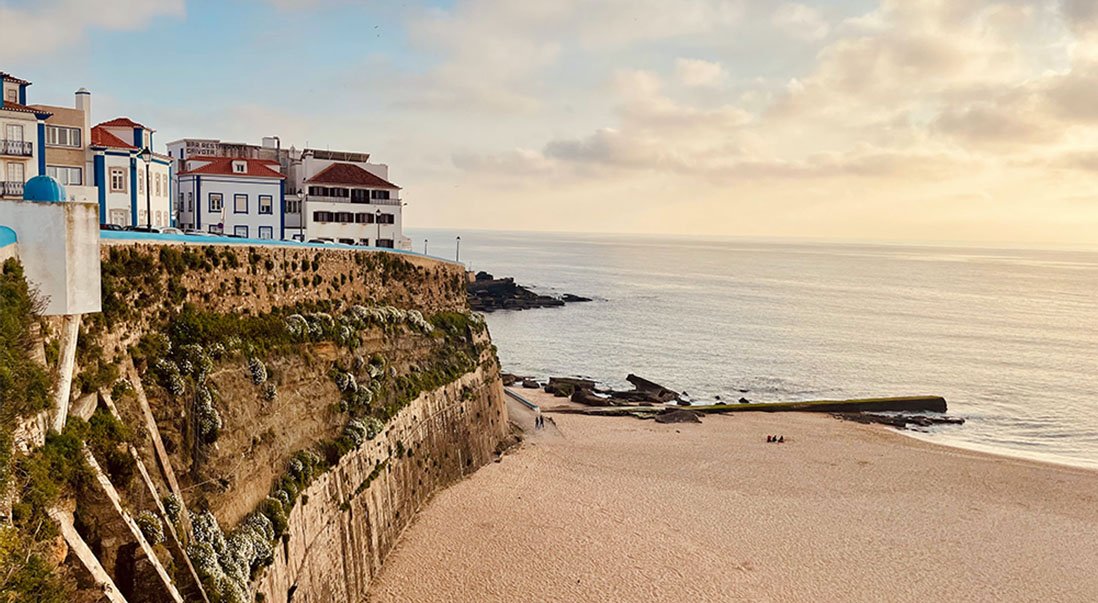
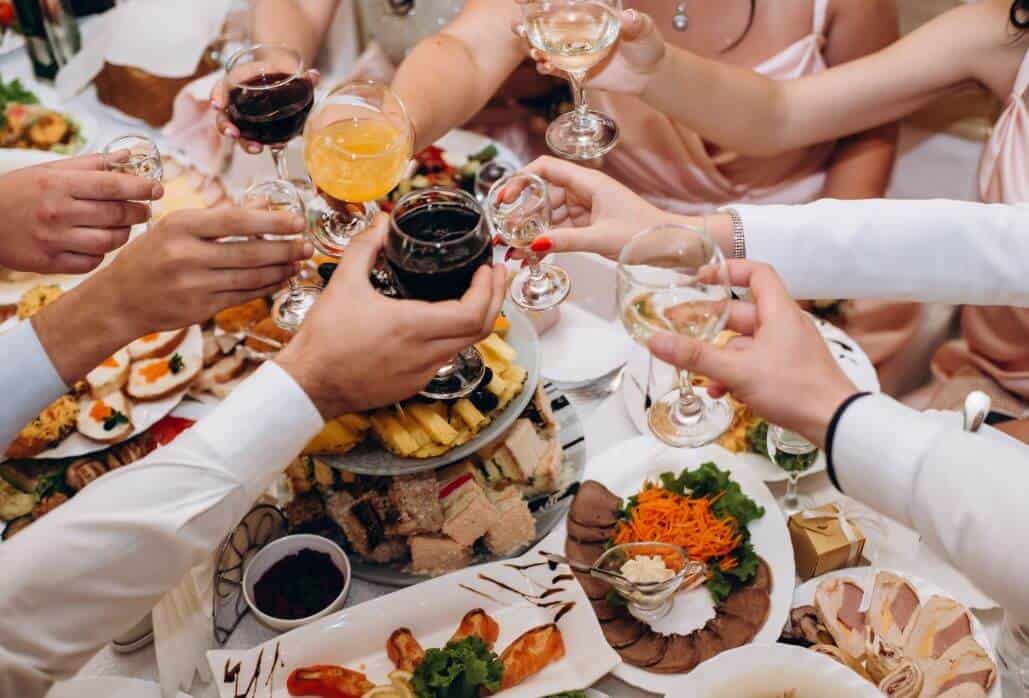
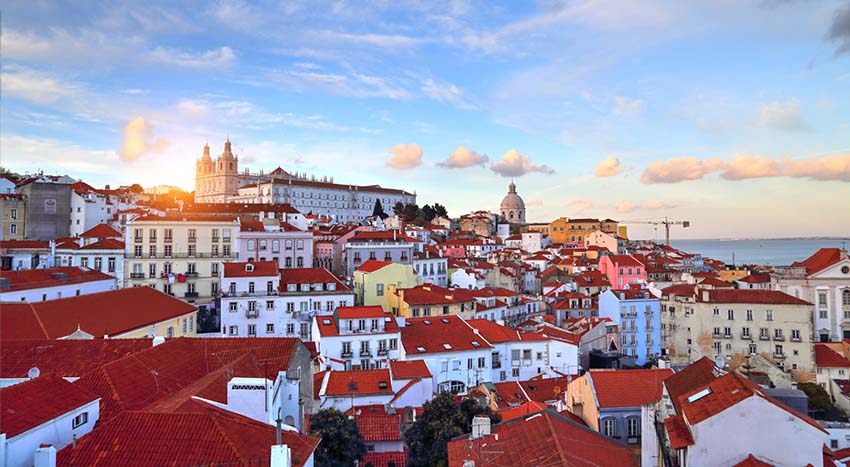

I’m moving to lisbon this year. Great article
So happy that it helped you!
Thanks a lot for your great article, it is helping me a lot to plan my travel in end of may / early June 🙂
I’m very excited about planning my trip to Lisbon, and your guide has been incredibly helpful. The history you’ve included makes the city even more intriguing. I love the idea of celebrating Santos Populares in June with the local traditions and food, particularly the ginjinha!
Your advice on footwear is duly noted, it makes perfect sense considering the city’s hilly terrain. Also, your seasonal packing guide will definitely come in handy.
Finally, I really appreciate your recommendations for tour options, especially the Food and Wine Walking Tour, which is right up my alley! I’m looking forward to my trip. Thanks for the comprehensive guide and cant wait to visit Lisboa.
I am so happy it helped you!